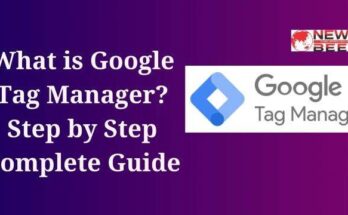To boost your Google AdSense CPC (Cost Per Click), focus on creating high-quality, engaging content that attracts a targeted audience. Optimize your ad placements strategically to enhance visibility without compromising user experience. Conduct keyword research to integrate relevant keywords into your content, attracting ads with higher bids. Regularly analyze your performance metrics and experiment with ad formats to identify what works best for your audience. Additionally, consider leveraging responsive ad units and staying informed about industry trends to stay competitive and potentially increase CPC.
What is AdSense?
Google AdSense is an advertising program that allows website owners and content creators to monetize their online properties by displaying targeted ads. It acts as a bridge between advertisers and publishers, providing a platform for the seamless display of relevant ads to a specific audience.
How does AdSense Work?
AdSense operates on a pay-per-click (PPC) and pay-per-impression (PPM) model. Advertisers bid for ad space in an auction, and the highest bidder’s ad is displayed on the publisher’s site. Publishers earn revenue when visitors interact with the ads, either by clicking on them (CPC) or viewing them (CPM).
What is AdSense CPC?
CPC, or Cost Per Click, is the amount an advertiser pays when a user clicks on their ad. AdSense CPC is a crucial metric for publishers, as it directly influences their earnings. Higher CPC values translate to more revenue for each click on the ads displayed on your site.
What is AdSense CTR?
CTR, or Click-Through Rate, is the percentage of users who click on an ad compared to the total number of users who view the ad. It’s calculated by dividing the number of clicks by the number of impressions and multiplying by 100 to get a percentage. A higher CTR indicates that your audience finds the ads relevant and engaging.
How to Calculate your CPC?
Calculating your Google AdSense CPC is straightforward. Simply divide your total earnings by the number of clicks received. For example, if you earned $100 from 200 clicks, your CPC would be $0.50 per click.
CPC = Total Earnings / Number of Clicks
What Is A Good AdSense CTR?
A good AdSense CTR varies across different industries and niches. However, a general benchmark is around 1-3%. If your CTR falls below this range, it might indicate that your ads are not resonating with your audience, and adjustments to ad placement or content may be necessary.
Keyword Research
To boost your AdSense revenue, keyword research is crucial. Identify high-value keywords relevant to your content that advertisers are willing to bid on. Tools like Google Keyword Planner can help you discover keywords with high search volumes and competition.
Quality Content Creation
The foundation of a successful AdSense strategy is quality content. Engaging, relevant, and informative content not only attracts more visitors but also keeps them on your site longer. This increased engagement can positively impact your CTR and, subsequently, your earnings.
Read Also:- What is Chatgpt Step by Step
Optimize Ad Placement:
Effective ad placement is like the backbone of a revenue-generating website. Conduct a thorough analysis of your site’s layout and user behavior to strategically position ads where they’re most likely to be noticed without disrupting the user experience. Balancing visibility with user satisfaction is the golden rule.
Experiment with Ad Types:
Diversify your ad portfolio by experimenting with different ad types. Whether it’s display ads, native ads, or video ads, each type has its strengths. Test and track the performance of each to understand what resonates best with your audience and yields the highest returns.
Increase Website Traffic:
More traffic often translates to more ad impressions and, consequently, increased revenue. Implement a well-rounded digital marketing strategy that includes content marketing, social media promotion, and SEO techniques to boost your website’s visibility and draw in a larger audience.
Responsive Ad Units:
In a world where users access content from various devices, it’s crucial to have responsive ad units. Ensure that your ads seamlessly adjust to different screen sizes, providing a consistent and visually appealing experience across desktops, tablets, and smartphones.
A/B Testing:
A/B testing is your secret weapon in the quest for optimization. Experiment with different ad creatives, colors, and calls-to-action to identify what resonates best with your audience. Regular testing allows you to fine-tune your approach for maximum impact.
Improve Page Load Speed:
User experience is paramount, and a slow-loading website can turn visitors away. Optimize your website’s speed by compressing images, leveraging browser caching, and minimizing unnecessary scripts. A faster site not only keeps users engaged but also positively impacts ad viewability.
Target High-Paying Niches:
Not all niches are created equal when it comes to ad revenue. Research and target high-paying niches that align with your content. Advertisers are willing to pay more for ad space in lucrative industries, contributing to higher overall revenue.
Also, Read This: What is Digital Marketing in Hindi
Build a Targeted Audience:
Understanding your audience is essential for effective ad targeting. Create content that resonates with your target demographic, and use social media and email marketing to build a loyal audience. Advertisers value targeted exposure, making your ad space more valuable.
Monitor AdSense Reports:
Google AdSense provides valuable insights into your ad performance. Regularly analyze reports to identify trends, understand user behavior, and optimize accordingly. This data-driven approach allows you to make informed decisions for continuous improvement.




